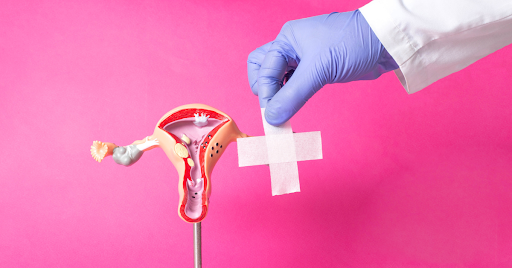A hysteroscopy is a procedure used to diagnose or treat problems of the uterus. This procedure may be done for various reasons, including preventative and diagnostic care. At Raleigh OB/GYN Centre, hysteroscopies are performed in-office by our physicians. The procedure is scheduled for a day when you are not having your menstrual period.
What Is A Hysteroscopy?
Hysteroscopy is used to diagnose or treat problems in the uterus using an instrument called a hysteroscope, which is a thin, lighted tube that acts as a telescope. It is inserted through the vagina into the uterus. The scope transmits images from inside the body to a screen. Other instruments may be used along with the hysteroscope, depending on why the procedure is being performed.
Why Is A Hysteroscopy Done?
According to the American College of Obstetricians and Gynecologists (ACOG), the most common reason for a hysteroscopy is to diagnose the cause of abnormal uterine bleeding. Abnormal uterine bleeding includes unusually heavy periods, prolonged menstrual periods, or bleeding between periods. Other reasons a hysteroscopy may be performed include
- Removing non-cancerous fibroids or polyps
- Diagnosing the cause of repeated miscarriage
- Helping to discover the underlying cause of fertility problems
- Removing adhesions that are the result of an infection or previous surgery
- Finding the location of an intrauterine device (IUD)
- Postmenopausal women experiencing unexplained bleeding
Some possible complications of hysteroscopy include infection, bleeding, pelvic inflammatory disease, or complications from fluid or gas used to expand the uterus.
How Do You Prepare For A Hysteroscopy?
At Raleigh OB/GYN, hysteroscopies are performed in-office by one of our physicians on a day you are not having your menstrual period. Before your procedure, you should take a shower and refrain from using any lotions, perfumes, or deodorants. Depending on your specific needs, your provider may give you medication to help you relax and open your cervix.
What Happens During A Hysteroscopy?
Before the hysteroscope is inserted, the vagina and cervix are cleaned with an antiseptic solution. Once this is complete, the hysteroscope is passed into your womb, and fluid is gently pumped inside to make it easier for your doctor to see. To do this, an instrument called a speculum may be inserted into your vagina to hold it open. Images are sent to a monitor so your provider can spot any abnormalities. This procedure generally takes anywhere from 10 to 30 minutes but can take longer or shorter depending on the diagnosis and symptoms.
How Do You Recover From Hysteroscopy?
In most cases, you can go home the same day you have the procedure. Those who were administered general anesthesia will need to wait until it has worn off or have someone take them home. Some women may experience slight discomfort, cramping, or blood discharge post-procedure— this is considered normal. However, should you experience a fever, severe abdominal pain, or heavy vaginal bleeding or discharge, consult your doctor right away. Refrain from having sexual intercourse for roughly seven days to decrease the risk of infection. Unless directed otherwise by your healthcare provider, you can return to your normal activities the next day.
Procedures like hysteroscopies are performed to inspect the uterine cavity in order to diagnose and treat a number of different conditions, such as abnormal bleeding, polyps, fibroids, adhesions, and septums. The physicians, nurses, and medical staff at Raleigh OB/GYN offer a comprehensive list of gynecological and obstetric services to the women of the Raleigh, NC area. If you have questions or concerns about a health issue that can be diagnosed or treated with a hysteroscopy, call our office at (919) 876-8225 to make an appointment.


